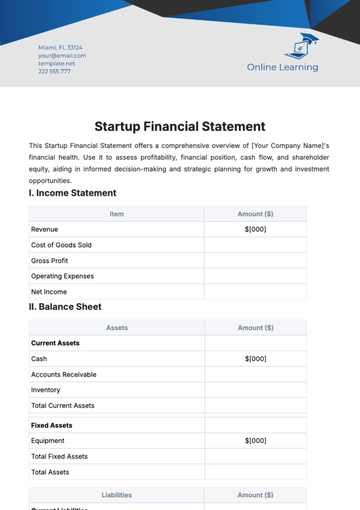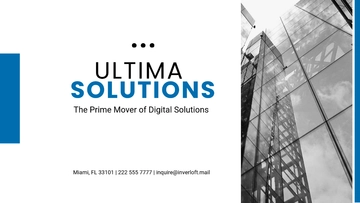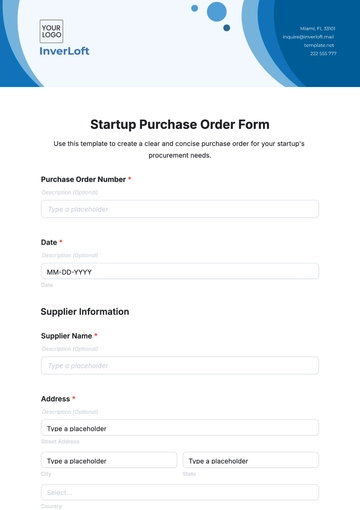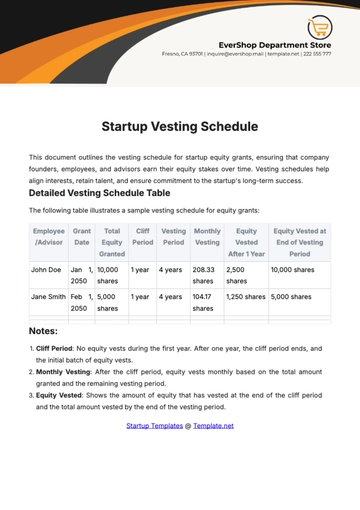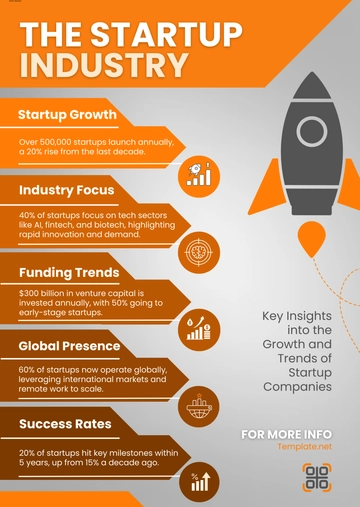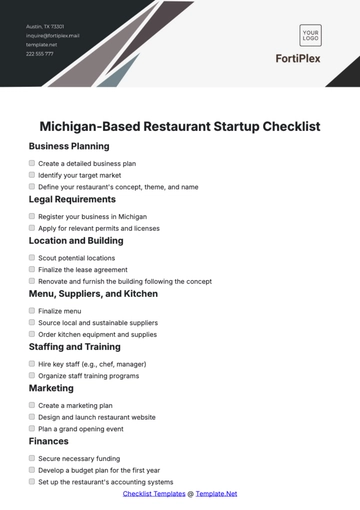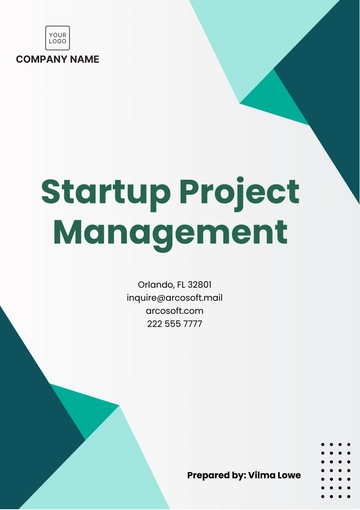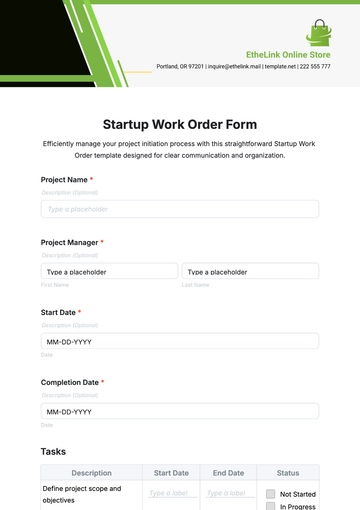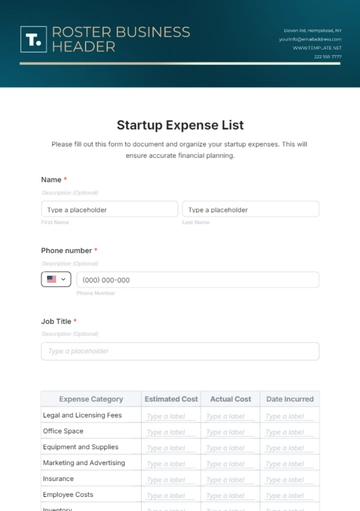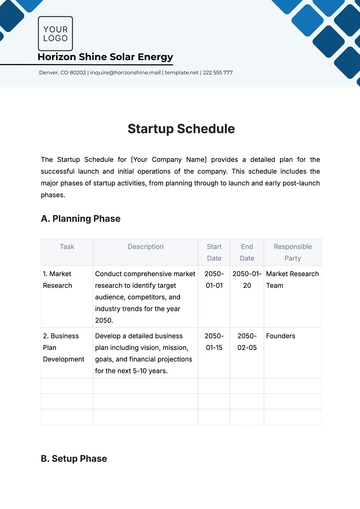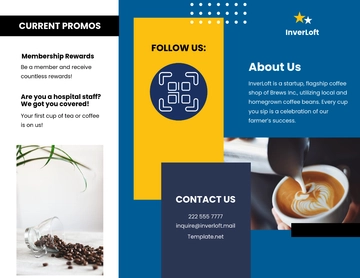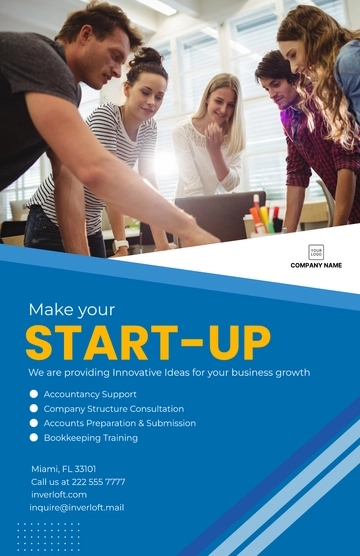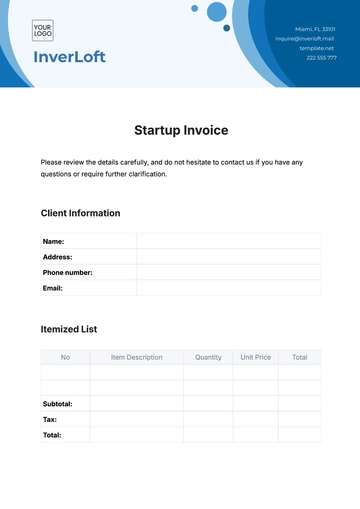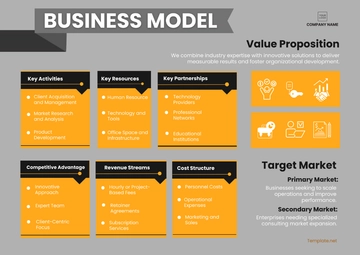Free Startup Operations Case Study
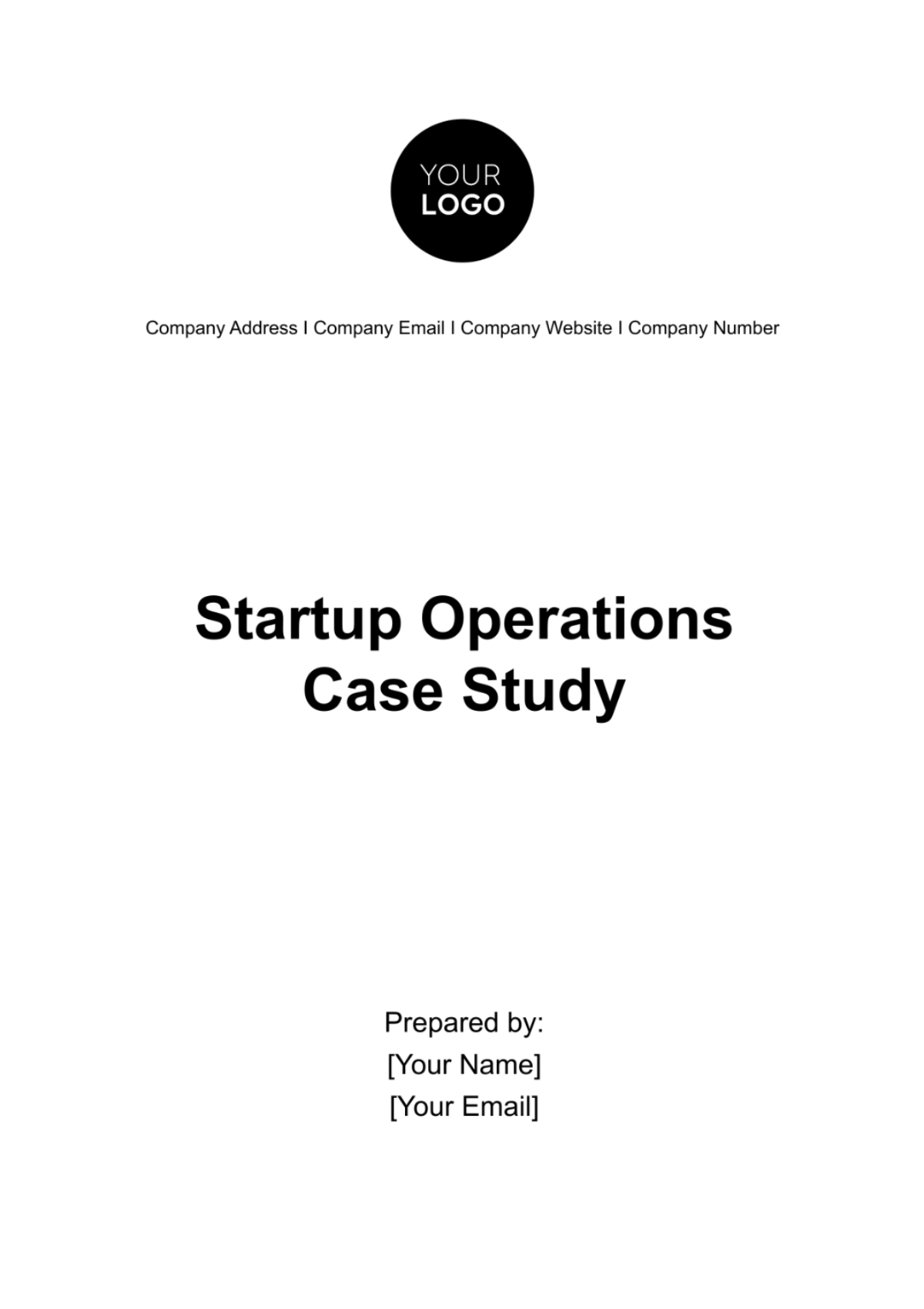
I. Introduction
In the continually shifting terrain of the tech industry, emerging startups grapple with a myriad of challenges that demand not just resilience but also a strategic and innovative approach to their operational endeavors. This case study serves as a comprehensive exploration into the operational strategies meticulously employed by [Your Company Name], offering a nuanced understanding of the distinctive methodologies that have been pivotal in steering the startup toward remarkable success.
Navigating through the complexities of the technology sector requires a profound grasp of operational dynamics, and [Your Company Name] stands as a testament to the effectiveness of strategic operational approaches. Through a detailed analysis of its operational strategies, this case study aims to unravel the intricate threads of success woven into the operational fabric of [Your Company Name], providing insights that can be instrumental for both aspiring startups and industry veterans alike. The tech landscape is marked by its dynamism, and [Your Company Name]'s journey unveils a narrative of adaptability, innovation, and strategic prowess in the face of industry challenges.
II. Company Overview
A. Introduction
Founded in [Year], [Your Company Name] stands out as a dynamic force in the tech industry, driven by a vision to pioneer innovative solutions for emerging challenges. The startup's commitment to cutting-edge technology and forward-thinking solutions positions it as a key player in the ever-evolving landscape.
B. Operational Headquarters
Strategically located at [Your Company Address], the startup's operational headquarters situates itself at the forefront of technological advancements, fostering collaboration and staying attuned to industry trends. The physical location serves as a hub for innovation, creating an environment that encourages creativity and efficiency.
C. Strategic Alliances
Collaborative Infrastructure: [Your Company Name] has strategically formed alliances with major tech industry players, leveraging their established infrastructures for enhanced operational efficiency. These collaborations enable streamlined processes and a broader reach within the market.
Market Presence Amplification: Through strategic partnerships, [Your Company Name] has amplified its market presence. By aligning with key players, the startup gains access to a wider audience, establishing itself as a formidable contender in the tech landscape.
Efficient Resource Utilization: Strategic alliances have facilitated efficient resource utilization for [Your Company Name]. Shared resources, expertise, and technological capabilities through partnerships enhance the startup's ability to navigate challenges and capitalize on opportunities.
D. Key Achievements
Highlighting the pivotal milestones in [Your Company Name]'s journey, the following achievements underscore the startup's impactful presence in the tech industry:
Milestone | Description |
|---|---|
Notable Funding Round | Secured a substantial $[1,000,000] in the latest funding round, fueling strategic initiatives and fortifying financial stability. |
In the latest funding round, [Your Company Name] secured an impressive $1,000,000 in Series B funding, a testament to the confidence investors have in its operational strategies and growth potential. This investment provides the startup with the financial muscle to scale operations, invest in research and development, and explore new market opportunities. The successful fundraising not only reinforces the market's belief in [Your Company Name]'s business model but also positions it as a competitive force in the tech industry. With this infusion of capital, [Your Company Name] is poised for accelerated growth, strategic expansions, and further innovation in the evolving tech landscape.
III. Methodology
To conduct a comprehensive analysis of the company's operational strategies, a multifaceted methodology was employed over the last six months. This involved a combination of primary and secondary research methods, aiming to delve into the intricacies of the startup's operations.
A. Primary Research
Interviews: Extensive one-on-one interviews were conducted with key stakeholders, including executives, operational leaders, and team members. These interviews provided invaluable insights into the firsthand experiences, decision-making processes, and perspectives on the company's operational strategies. Through open-ended questions, nuances in operational challenges and successes were explored.
Surveys: Surveys were distributed among employees at different hierarchical levels, seeking to gather quantitative data regarding their perception of operational efficiency, the impact of lean operations, and the effectiveness of customer-focused product development. The survey design aimed at capturing diverse perspectives within the organization.
B. Secondary Research
Documentary Analysis: A meticulous examination of internal documents, such as operational reports, strategic plans, and partnership agreements, was undertaken. This documentary analysis provided a foundational understanding of the company's operational journey, offering insights into the evolution of strategies and the rationale behind key decisions.
Industry Reports: External sources, including industry reports, market analyses, and case studies, were reviewed to benchmark the company's operational strategies against industry standards. This external perspective helped identify unique aspects contributing to its success and provided a broader context for understanding industry dynamics.
C. Data Analysis
Quantitative Metrics: Key quantitative metrics, including financial performance indicators, customer satisfaction scores, and efficiency ratios, were systematically analyzed. This involved employing statistical tools to quantify the impact of the operational strategies on the overall performance of the company and identify patterns or trends.
Comparative Analysis: A comparative analysis was conducted against industry peers to discern competitive advantages and distinctive features in the company's operational model. This involved benchmarking key performance indicators against industry averages and identifying areas where the company outperformed or showcased innovative approaches.
D. Data Collection
Time Frame: The data collection process spanned the last six months, ensuring a comprehensive representation of the company's operational performance over a relevant period.
Data Sources: Data were sourced from internal databases, financial records, customer feedback platforms, and external industry databases. Rigorous validation processes were applied to ensure data accuracy and reliability.
E. Ethical Considerations
Privacy: Strict adherence to privacy and confidentiality standards was maintained throughout the research process. Personal identifiers were anonymized to protect individual privacy.
Informed Consent: In cases where individual perspectives were sought, informed consent procedures were followed, outlining the purpose, scope, and use of the information provided.
IV. Results and Analysis
A. Lean Operations
In assessing the lean operations of the company, the following metrics present a detailed overview of the company's performance in critical areas. The table below encapsulates quantitative insights into the effectiveness:
Metrics | Current Status | Previous Status | Change |
|---|---|---|---|
Cost Savings | $2,500,000 | $1,800,000 | +38% |
Project Completion Time | |||
Resource Utilization | |||
Employee Satisfaction Score |
The implementation of Lean Operations has proven to be a transformative strategy for the company. These metrics collectively indicate a successful integration of lean principles, resulting in a more streamlined and cost-effective operational framework. The substantial increase in cost savings by 38% is a remarkable achievement, indicating a successful implementation of lean principles. This positive percentage change signifies that the company has effectively reduced operational costs, enhancing overall financial efficiency. The reduced project completion time by 33% reflects streamlined processes and improved project management, leading to quicker delivery of products or services. The notable increase in resource utilization efficiency by 21% further demonstrates the optimized allocation of resources, maximizing workforce capabilities. The elevated employee satisfaction score by 18% reinforces the positive impact of lean operations on the work environment, fostering a culture of collaboration and efficiency.
B. Customer-focused Product Development
In analyzing the company's customer-focused product development strategies, the table below provides quantitative insights into key metrics. These metrics shed light on the company's commitment to delivering products that align with customer needs and preferences:
Metrics | Current Status | Previous Status | Change |
|---|---|---|---|
Product Satisfaction Score | 4.8 | 4.2 | +14% |
Customer Retention Rate | |||
Product Iterations |
The Product Satisfaction Score stands at an impressive 4.8, marking a significant 14% increase from the previous period. This notable surge indicates a substantial enhancement in customer satisfaction, suggesting that the company's products are not only meeting but surpassing customer expectations. The rise in the Product Satisfaction Score signifies positive customer experiences, likely driven by factors such as product quality, features, and responsiveness to user feedback. The 4.8 score reflects a high level of customer contentment and positions the company favorably in the market.
C. Strategic Alliances
Exploring the operational strategies, a key focus is on fostering strategic alliances. The table below delves into key metrics associated with these alliances, shedding light on the success in forging and maintaining valuable partnerships:
Metrics | Current Status | Previous Status | Change |
|---|---|---|---|
Market Expansion Index | 78% | 65% | +20% |
Partnership Satisfaction | |||
Collaborative Projects |
Strategic alliances play a pivotal role in the company's growth strategy, offering access to shared resources, expertise, and broader market reach. Successful alliances contribute to innovation, operational efficiency, and increased market influence. The Market Expansion Index shows a substantial advancement, soaring from 65% to 78%, marking an impressive 20% increase. This metric serves as a key indicator of the company's efficacy in expanding its market influence. The surge in the Market Expansion Index signifies effective strategies, including venturing into new markets or strengthening existing partnerships. This positive trend underscores the company's adept navigation of market dynamics, seizing growth opportunities and significantly broadening its market presence. The noteworthy improvement reflects a strategic and successful approach to market expansion, enhancing the company's overall standing in the industry.
D. Market Positioning
In the quest for market dominance, brand recognition plays a pivotal role in influencing consumer choices and fostering trust. Outlined in the table is the result of the analysis:
Metrics | Current Status | Previous Status | Change |
|---|---|---|---|
Brand Recognition Index | 88% | 75% | +17% |
Market Share Growth | |||
Customer Perception Shift |
The 17% improvement in the Brand Recognition Index is indicative of the company's successful implementation of strategic branding initiatives. It denotes a considerable positive shift in how the market perceives and recognizes the company. The increase suggests that consumers are not only becoming more aware of the brand but are also associating it with positive attributes. This positive association is likely a result of effective communication, consistent branding elements, and a compelling brand narrative. The company's ability to enhance brand recognition by 17% showcases its adeptness in navigating the competitive landscape and creating a distinct and memorable brand presence. This improvement is not merely quantitative; it symbolizes the company's ability to carve out a distinctive identity in the market, making it a recognizable and preferred choice among consumers.
V. Conclusion
In conclusion, the comprehensive analysis of [Your Company Name]'s operational strategies underscores the significance of lean operations, customer-centric product development, and strategic alliances in fostering success within the tech industry. Embracing lean principles has positioned [Your Company Name] as a cost-effective and agile player, while customer-focused product development ensures alignment with evolving market demands. The strategic alliances forged by [Your Company Name] with key industry players have played a pivotal role in expanding its market reach and leveraging established infrastructures.
The findings of this case study serve as a valuable blueprint for emerging startups, showcasing the importance of adaptability, customer-centric approaches, and collaborative partnerships in navigating the dynamic landscape of the technology sector. By adopting similar operational strategies, startups can draw inspiration and insights to chart their own paths to success in the competitive tech industry. As [Your Company Name] continues to thrive, this case study stands as a testament to the transformative impact of strategic operational decisions in shaping the destiny of a startup in an ever-evolving business environment.
VI. Recommendations
A. Further Embrace Lean Operations
To sustain and enhance operational efficiency, the company should deepen its commitment to lean operations. Continuously identify and eliminate non-essential processes, reduce waste, and streamline workflows. Consider incorporating advanced technologies and automation tools to further optimize project management and collaboration, ensuring a swift and cost-effective operational framework.
B. Strengthen Customer Engagement Strategies
Building on the success of customer-focused product development, the company should intensify efforts to strengthen customer engagement. Implement a comprehensive customer relationship management (CRM) system to gather valuable insights, conduct regular surveys, and foster ongoing communication. This approach will not only solidify existing customer relationships but also pave the way for attracting new customers based on their evolving needs.
C. Expand Strategic Alliances
The case study highlights the positive impact of strategic alliances on the company's growth. To capitalize on this success, explore additional partnerships with innovative tech companies. Identify potential collaborators that complement the company's objectives and can contribute to mutual growth. Leverage these alliances to access new markets, share resources, and collectively address industry challenges.
D. Enhance Market Positioning
To reinforce its market position, the company should further invest in brand recognition and market share growth. Implement targeted marketing campaigns, sponsorships, and community engagement initiatives to boost brand visibility. Additionally, focus on innovative strategies to capture a larger market share, keeping a keen eye on market trends and customer preferences.
E. Foster Customer Perception
The improvement in the Customer Perception Shift metric indicates a positive trend. To build on this, the company should continue investing in initiatives that enhance customer perception. Prioritize initiatives such as personalized customer experiences, user-friendly interfaces, and ongoing communication to consistently exceed customer expectations.
F. Explore New Market Opportunities
Given the positive Market Expansion Index, the company should proactively explore new market opportunities. Conduct thorough market research to identify untapped segments, emerging trends, and potential areas for diversification. This proactive approach will enable the company to stay ahead of the competition and position itself as an industry leader.
- 100% Customizable, free editor
- Access 1 Million+ Templates, photo’s & graphics
- Download or share as a template
- Click and replace photos, graphics, text, backgrounds
- Resize, crop, AI write & more
- Access advanced editor
Showcase operational success with the Startup Operations Case Study Template available only here at Template.net! This editable case study ensures a customizable presentation of your startup's achievements. Utilize the AI Editor Tool for smooth tailoring whether showcasing operational success at the beginning or maximizing the case study for ongoing impact!
You may also like
- Startup Agreement
- Non Profit
- Transport and Logistics
- Education
- IT Services and Consulting
- Startup Presentation
- Startup Business Plan
- Startup Proposal
- Startup Plan
- Startup Brochure
- Startup Form
- Startup Flyer
- Startup Checklist
- Startup Budget
- Startup Poster
- Startup Contract
- Startup Invoice
- Startup Letterhead
- Startup Quotes

